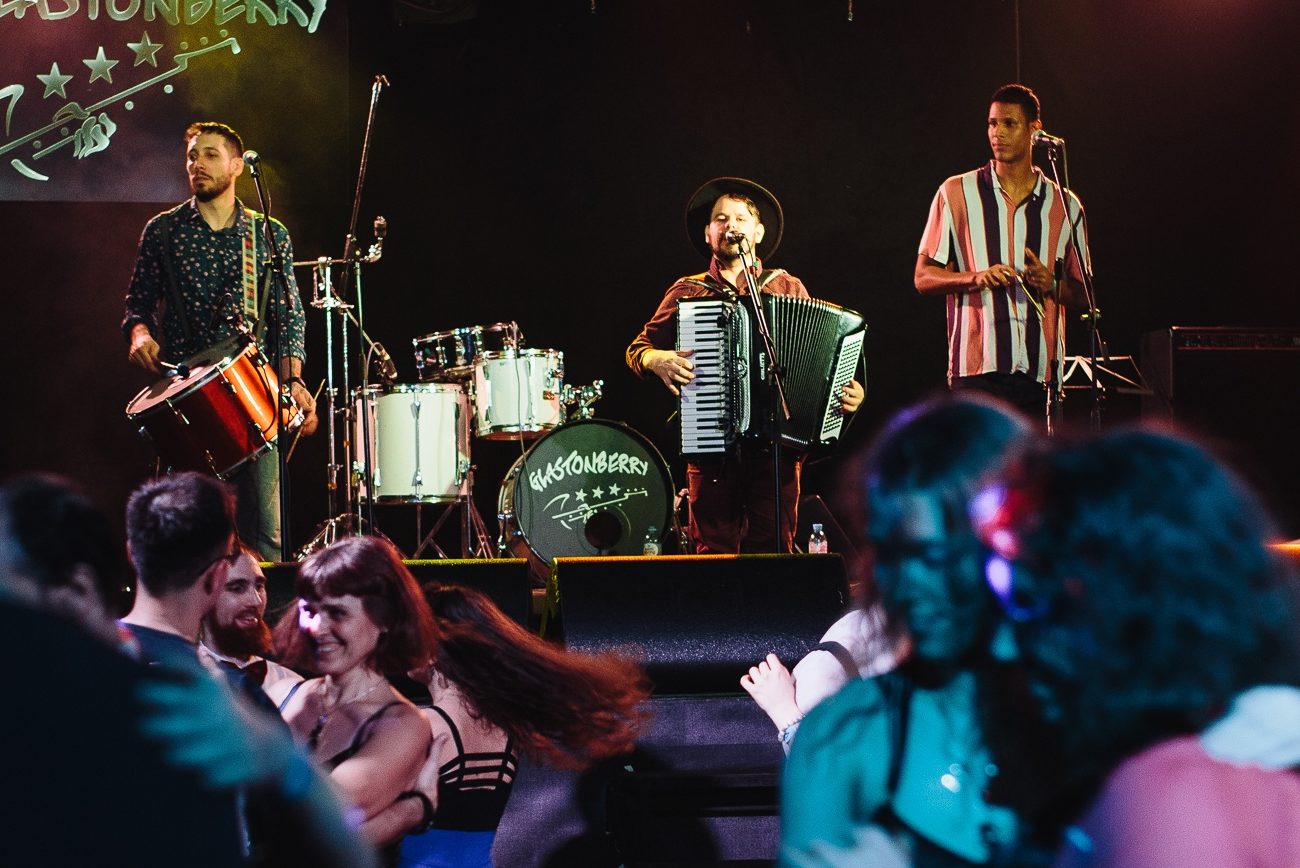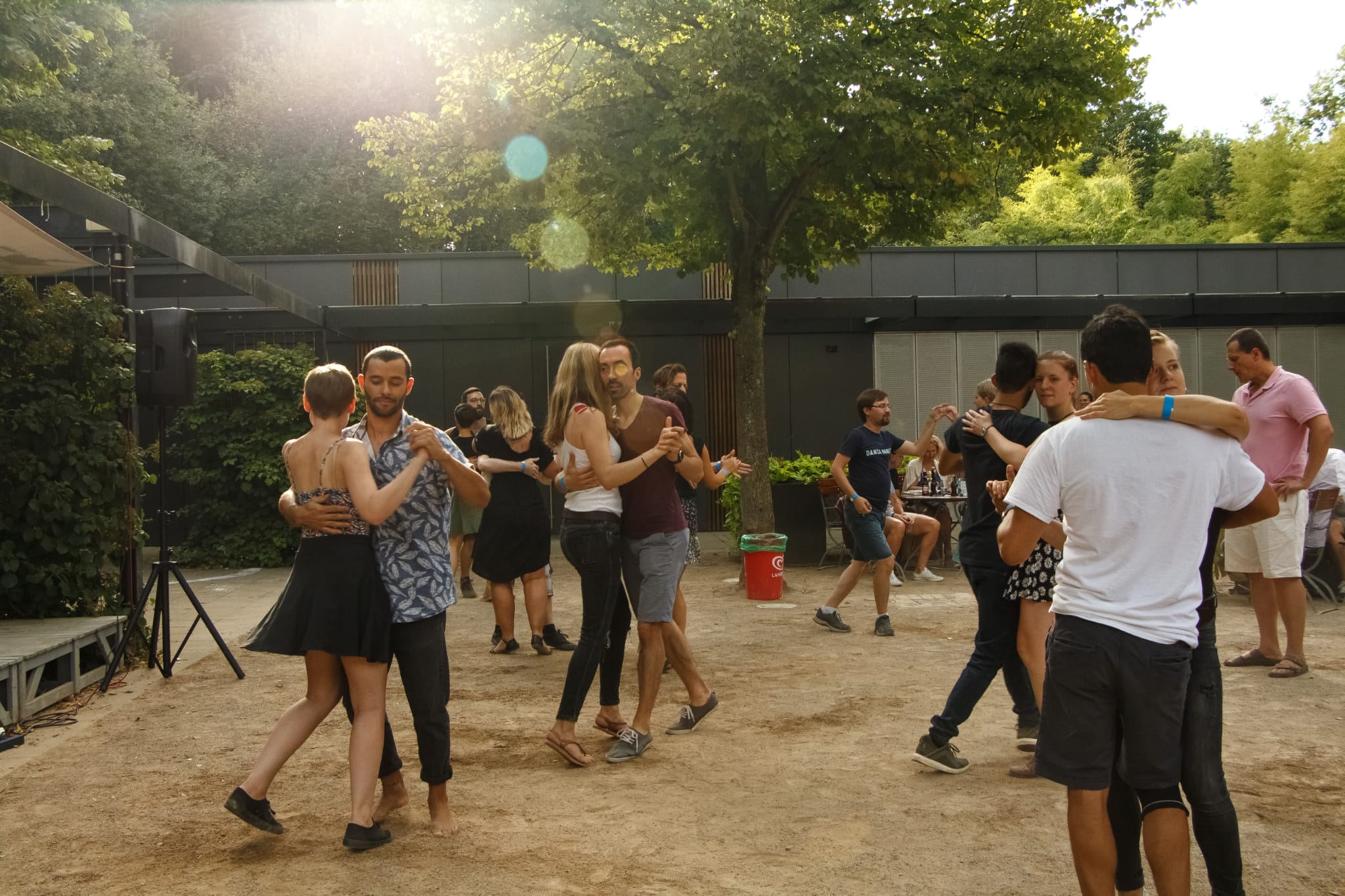What is Forró?
Sanfona, zabumba and triangle! That’s Forró! But that’s not all!
Forró is the music of the people, made by the people and for the people, it is music for celebration, devotion, fun, communion and struggle. It is a music that surpasses the barrier of time. Forró is alive, as are the people who make it. I like to say that Forró was and is still being. Forró is not ready, finished, in the same way that people are not yet.
For this reason, when talking about Forró it is important to make spatial, temporal, sociopolitical and even ethical-philosophical cut-outs. Forró won over the world, it left a small, yet large place, the Northeastern backlands of Brazil, for the rest of the Brazilian continent, undeniably led by Luiz Gonzaga. He showed the country how the rural musicality of the Northeast carried a huge musical knowledge, but not only that. Luiz Gonzaga showed Brazil the knowledge of the people (in this case the people from the Northeast of Brazil, from the backlands) and it can also be said that he only organised the festival, a reunion of the people with themselves. Although to organize this reunion he had to overcome social and cultural barriers, loaded with prejudice, xenophobia, racism and many other ills of a nation that was based on exploitation and inequality.
But he did it! He brought the rural music of the Northeast (which was not always called Forró) to the great public of radios and televisions, always eager for novelty and “exotic” things. However, it was by travelling through the interior of Brazil by car, pickup truck and lorry, in constant meetings with the people in the small towns that Luiz kept Forró alive, when the big media were already finding other novelties to entertain their public.
For this, as he says in his songs, he carried in his matulão (a kind of leather bag or suitcase) a zabumba, a triangle and an accordion, the instruments he chose to perform his traditional music, to present to the public his musicality, polished in rural, back-country, Northeastern parties and celebrations. Luiz not only presented music through his person, his voice and his stories, he unveiled to his audience a cultural scenario and even landscapes that came to life through his voice.
Written by Fernando Corrêa.

Because Luiz Gonzaga used mainly these three instruments, the trio Pé de Serra was consolidated, but it is known that in the “pés-de-serra” and other parts of the Northeast, the parties and forrós took place with a great variety of instruments, such as pandeiro, ganzá, melê, reco-reco, rabeca, cavaquinho, viola, guitar, pifes, harmonicas and virtually any instrument which the people who danced there could play. It is worth pointing out that the 8-bass accordion, the famous Pé de Bode, had a prominent place in the festivals of the Northeastern sertão long before forró became known.
So much so that, during its “industrialisation” in the 50s, the King’s Baião didn’t make a fuss and embraced other instruments in its recordings, both by Gonzagão and by his successors, Jackson do Pandeiro, Ary Lobo, Marinês, Clemilda, Anastacia, Dominginhos, and so many others.
For the more attentive listeners it is not difficult to perceive that during the decades from the 50s to the 80s (at least), although the compositions and instruments used in Forró recordings and shows had somehow changed and become “modernized”, there was a cohesion in the way this music was played and sung, possibly due to the more or less cohesive cultural context of the artists involved, generally northeasterners, with a history of living in rural areas, either as rural workers or as recent arrivals in the metropolis, but still immersed in a culture with a very strong rural identity.
But Forró won over Brazil and without leaving the countryside, it also settled in the big cities, and from the 90’s onwards, mainly, Forró gained other accents, other touches, both in the Northeast, with the so-called “Forró Eletrônico”, and in the Southeast with “Forró Universitário”. Some people think that these accents somehow de-characterise “authentic” Forró.
It’s a very intriguing discussion and far from finished, but it’s interesting to think that Forró has its roots and its knowledge, it also has the people who did and still do it, with its significances very close to what was done in the past.
It is necessary to consider the powers involved in human relations, mainly between different social strata, so that there is no cultural obliteration of a large layer of the Brazilian population, in favour of a cultural industry that makes a profit, but is not concerned with giving anything back to the popular artists or to their communities.
Communities formed by the cowboys, the mourners, the farmers and popular artists who, with their novenas, farinhadas, multirões, adjuntórios, tapas de casa and other rural work and celebrations, founded the northeastern musicality that culminated in Forró. With Forró now spread throughout Brazil and the world, there are Forró compositions with influences from Rock, Reggae, Salsa and many others. Forró compositions already exist in French, German, Russian, English, Japanese and other languages. How these different accents connect with Forró is still too early to tell, but one thing is for sure:
Forró is being!

